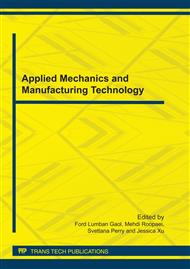[1]
Phillips RW. Wrought base metal alloys. Wrought gold alloys. In: Skinner's science of dental materials. 9th ed. Philadelphia: W.B. Suanders; 1991. pp.537-51.
Google Scholar
[2]
Proffit WR, Fields, Jr. HK. Mechanical principles in orthodontic force control. In: Contemporary orthodontics. 2nd ed. St. Louis: Mosby-Year Book; 1993. pp.289-315.
Google Scholar
[3]
Council on Dental Materials, Instruments and Equipment of the American Dental Association. Orthodontic appliances, devices and materials: materials, instruments and equipment. 2nd ed. Chicago. American Dental Association; 1983. pp.182-92.
DOI: 10.14219/jada.archive.1992.0142
Google Scholar
[4]
Burstone CJ. Application of bioengineering to clinical orthodontics. In: Orthodontics: current principles and techniques. 2nd ed. St. Louis: Mosby-Year Book; 1994. pp.235-67.
Google Scholar
[5]
Kawashima I, Ohno H, Sachdeva R. Relationship between Af temperature and load changes in Ni-Ti orthodontic conditions. Dent Mater J 1999; 18(4): 403-12.
DOI: 10.4012/dmj.18.403
Google Scholar
[6]
Miura F, Mogi M, Ohura Y, Hamanaka H. The super-elastic property of Japanese NiTi alloy wire for use in orthodontics. Am J Ortho Dentofacial Orthop 1986; 90: 1-10.
DOI: 10.1016/0889-5406(86)90021-1
Google Scholar
[7]
Warita H, Iida J, Yamaguchi S, Matsumoto Y, Fujita Y, Domon S. A study on experimental tooth movement with Ti-Ni alloy orthodontic wires: comparison between light continuous and light dissipating force. J Jpn Orthod Soc 1996; 55: 515-27.
Google Scholar
[8]
Kusy RP, Dilley GJ. Elastic property ratios of a triple-stranded stainless steel archwire. Am J Orthod 1984; 86: 177-88.
DOI: 10.1016/0002-9416(84)90369-5
Google Scholar
[9]
Kusy RP, Steven LE. Triple-stranded stainless steel wires-evaluation of mechanical properties and comparison with titanium alloy alternatives. Angle Orthod 1987; 57: 18-32.
Google Scholar
[10]
Brantly WA, Eliades T. Orthodontic material: scientific and clinical aspects: Thieme, New York; 2001. pp.79-103.
Google Scholar
[11]
Brantly WA. Orthodontic wires. In: Dental materials: properties and selection: Quintessence Publishing; 1989. pp.381-98.
Google Scholar
[12]
Buehler WI, Gilfrick JV, Wiley RC. Effect of low-temperature phase changes on the mechanical properties of alloy near composition NiTi. J Appl Physiol 1963; 34: 1475-7.
Google Scholar
[13]
Civjan S, Huget EF, DeSimon LB. Potential applications of certain nickel-titanium (Nitinol) alloys. J Dent Res 1975; 54: 89-96.
DOI: 10.1177/00220345750540014301
Google Scholar


